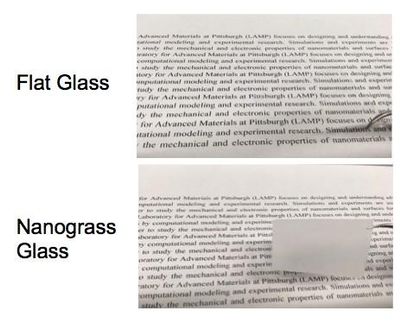Smoothing the way for economic flexible OLEDs
The dream of low-cost, energy-efficient lighting on a big scale becomes tangible thanks to barrier coating systems for flexible OLEDs developed by Fraunhofer researchers
Organic light-emitting diodes (OLEDs) are nowadays synonymous with next generation lighting, which could replace common light-bulbs in a couple of years. They convert electricity very efficiently into light of high quality. However, existing OLEDs on the market are costly and mostly deposited on rigid materials such as glass. The development of flexible, organic light-emitting diodes, which can be manufactured on an industrial scale, promises economies of scale and accordingly broader marketing of the environmentally sound and highly efficient devices.
Scientists from two renowned Fraunhofer Institutes from Dresden (Germany) assembled flexible, large-area organic light-emitting diodes with barrier layer systems which are necessary for long device lifetimes. The Fraunhofer Institute for Photonic Microsystems IPMS and the Fraunhofer Institute for Electron Beam and Plasma Technology FEP for the first time manufactured a flexible OLED in a roll-to-roll production and encapsulated the device in a subsequent inline-process. This process design would allow the production in a single plant. The steps were developed in the frame of the project ROLLEX (roll-to-roll production of highly efficient light-emitting diodes on flexible substrates, support codes 13N8858 and 13N8857), funded by the German federal ministry of education and research (BMBF). Professor Karl Leo, director of the Fraunhofer IPMS, confirms: "The successful assembly of an OLED in a roll-to-roll process means a breakthrough on the way to highly efficient and competitive devices. The achievement of this project proves the capacity of Dresden as a focal point for research in organic electronics."
A major component of flexible organic LEDs is the homogenous encapsulation of luminescent layers with transparent barrier layer systems. Permeation of only small amounts of humidity or oxygen shortens the lifetime of the devices drastically, which explains the strong need for barrier systems protecting the luminescent materials on a large area without defects. However, the barrier layers should not absorb the emitted light and should not interfere with the colors of the light.
The researchers of the Fraunhofer Institutes deposited OLED materials on a cheap aluminum foil in a roll-to-roll pilot plant, further encapsulated the luminescent foil with a barrier layer system, patented by the Fraunhofer FEP, without compromising its luminosity. Dr. Christian May, head of the business unit "Organic Materials and Systems" at the Fraunhofer IPMS, is pleased about the promising project: "Developing the flexible OLED, experience from both institutes have been united in an optimal way. I am avid that we integrated the effective barrier layer systems developed from the Fraunhofer FEP into the OLED-technology of the Fraunhofer IPMS." Dr. Nicolas Schiller, head of the business unit "Coating of flexible products" at the Fraunhofer FEP adds: "The coating processes are all done in a roll-to-roll modus with a continuously moved substrate which opens up strong potential to reduce costs."
The technology developed by the two Fraunhofer Institutes marks a milestone on the way towards an industrial manufacturing of flexible OLEDs. Besides OLEDs, also other devices, such as organic solar cells or memory systems, could be realized in intermediate terms.
The work is going to be continued by the Dresden Institutes in a bigger consortium.
Other news from the department science

Get the chemical industry in your inbox
By submitting this form you agree that LUMITOS AG will send you the newsletter(s) selected above by email. Your data will not be passed on to third parties. Your data will be stored and processed in accordance with our data protection regulations. LUMITOS may contact you by email for the purpose of advertising or market and opinion surveys. You can revoke your consent at any time without giving reasons to LUMITOS AG, Ernst-Augustin-Str. 2, 12489 Berlin, Germany or by e-mail at revoke@lumitos.com with effect for the future. In addition, each email contains a link to unsubscribe from the corresponding newsletter.



























































